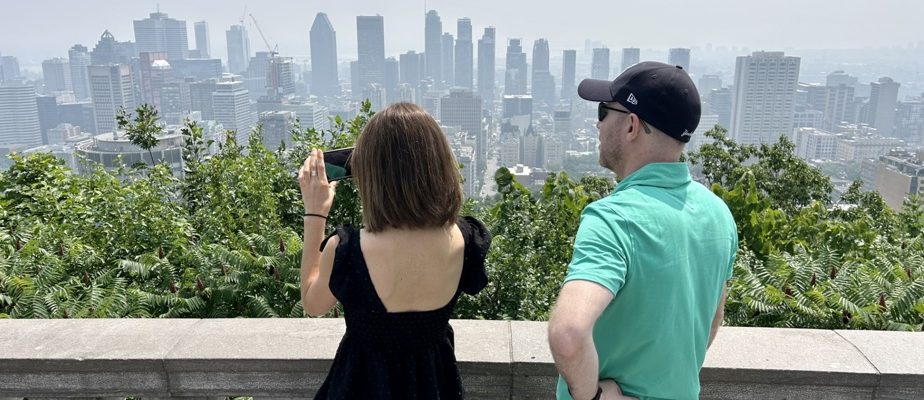A swimming competition and freediving training were turned upside down by the closure of the aquatic complex at Parc Jean-Drapeau on Thursday and Friday due to poor air quality, despite indications to the contrary from Public Health.
Due to poor air quality, the sports facilities as well as two of the three swimming pools of the aquatic complex at Parc Jean-Drapeau were closed by the City of Montreal late Thursday afternoon.
“At 7:20 p.m., we were informed that the activities [d’apnée] were cancelled. At the time the decision was made, the sky was blue and the air quality was still decent,” said The Press the president of Apneacity, François Leduc. ” I’m disappointed. I did not understand the decision and I do not consider that it was justified, ”he adds.
The general manager of the Quebec Swimming Federation, Francis Ménard, was also on hand Thursday for a provincial swimming competition. At the end of the evening, the staff advised him that the pools would be closed the next day. Access to the basin would only be possible with the authorization of Public Health.
The swimming competition which was to continue all weekend was therefore compromised. Director Francis Ménard contacted Public Health on Friday morning, after canceling part of the competition. “They were surprised that the competition was canceled and the sets were closed,” he says.
He is informed that the closure is caused by a communication problem between the City and Montreal Public Health.
It’s frustrating. If there is an indication to stop our competition, we will do it, but to know that it is a communication error, it is disappointing.
Francis Ménard, General Manager of the Quebec Swimming Federation
The swimming competition finally continued in the afternoon.
The Montreal Regional Public Health Department confirmed Friday to The Press that she did not recommend canceling outdoor activities on Thursday or Friday.

PHOTO ROBERT SKINNER, THE PRESS
The City of Montreal has closed some outdoor sports facilities due to smog.
For its part, the City of Montreal said it had closed certain outdoor facilities and canceled activities in order to ensure “the health and safety of its employees” who work outdoors, said media relationist Hugo Bourgoin. He invited citizens to check the schedules on the City’s website or to contact 311 before moving.
Montreal and Toronto among the most polluted cities
Montreal and Toronto were Friday among the six largest cities with the worst air quality in the world, due to forest fires. However, the concentration of polluting particles in the air was much lower than last weekend.
At the end of the afternoon, Jakarta was in first position in this sad list, followed by New York and Toronto, while Montreal occupied 6e rank, according to the IQair website.

PHOTO TIMOTHY A. CLARY, AGENCE FRANCE-PRESSE
New York’s Empire State Building in the mist on Friday
Despite several bouts of rain earlier this week, 99 forest fires are still raging in the north of the province. Due to the high concentrations of fine particles from these forest fires, smog warnings are in effect in Greater Montreal.
“It’s really not on the scale of what we had last week, when we reached 200 to 300 µg/m3 in southern Quebec. Right now, we’re hovering around 40 to 70 µg/m3 “, says Simon Legault, meteorologist at Environment Canada.
The smoke plume should remain present on Saturday. “There should be an improvement during the day on Sunday,” he said. The possible return of plumes is however possible. “We don’t really expect an end to the forest fire phenomenon right away, because there is not much rain expected in the coming days and weeks,” added Mr. Legault.
Since the individuals most affected by the consequences of smog are asthmatic children and people suffering from respiratory or cardiac problems, it is recommended that they avoid strenuous physical activity outdoors until the smog warning be lifted.
Why does the sky sometimes turn orange during a smog episode?
At sunset, the spectrum of colors emitted by the sun is altered. We then lose the cooler colors and what happens to our eyes consists mainly of orange hues. Particles emitted from forest fires can produce a similar effect, even during the day. According to meteorologist Simon Legault, the orange sky largely depends on the concentration and size of these particles, which explains the daily variations. “So it’s very hard to predict, if not impossible. »
